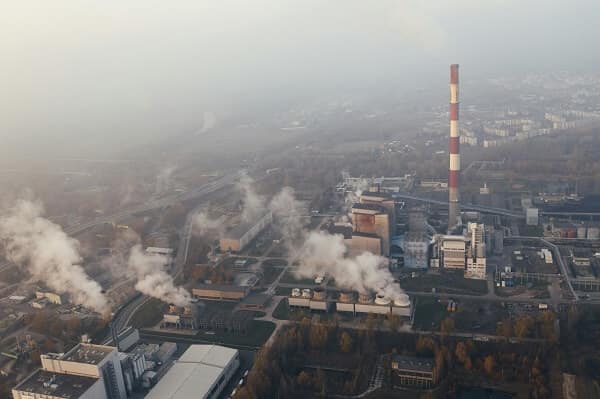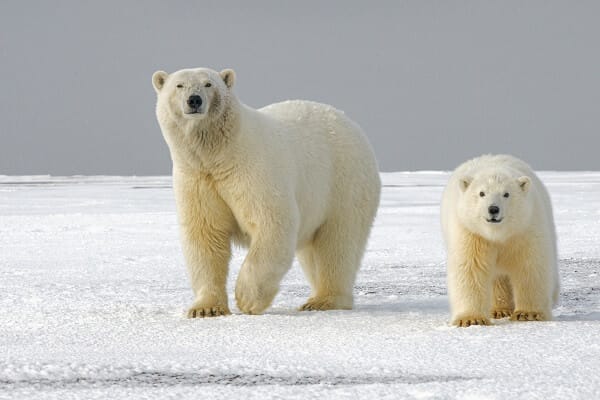
In the face of a rapidly changing world, discussions around climate change remain highly polarized. While the overwhelming majority of scientists agree that climate change is both real and driven by human activity, climate change myths and misinformation continues to cloud public understanding. This confusion stems largely from common myths and misconceptions spread across social media and various platforms.
In this post, we’ll debunk some of the most persistent climate change myths with scientific evidence. By the end, you’ll have a clearer understanding of why climate change is happening, what role humans play, and how the science overwhelmingly supports this reality.
1. Myth: “Climate Change is Just a Natural Cycle”
Debunked:
While Earth has experienced natural climate fluctuations in the past, the current rate and pattern of warming are unlike anything we’ve seen before. According to the Intergovernmental Panel on Climate Change (IPCC), the last few decades of warming are unprecedented in the last 1,200 years. The key difference today is the influence of human activity, particularly the burning of fossil fuels, which has drastically increased levels of carbon dioxide (CO2) in the atmosphere.

2. Myth: “It’s Just Weather, Not Climate”
Debunked:
Weather and climate are not the same. Weather refers to short-term atmospheric conditions, whereas climate refers to long-term patterns and trends. The idea that a cold winter day disproves global warming reflects a misunderstanding of this difference. In fact, climate change intensifies extreme weather, leading to more severe storms, heatwaves, and erratic weather patterns.
Scientific Fact:
A study from the National Oceanic and Atmospheric Administration (NOAA) states that extreme weather events—such as hurricanes and floods—are becoming more frequent and more intense due to rising global temperatures. These extreme conditions are consistent with predictions from climate models.
3. Myth: “Humans Aren’t the Main Cause of Climate Change”
Debunked:
Some skeptics claim that climate change is primarily due to natural factors like volcanic activity or solar variations. However, multiple studies show that the increase in greenhouse gases, particularly CO2, is directly linked to human activities such as industrialization and deforestation. The IPCC’s Fifth Assessment Report estimates that human activities have contributed more than 100% of the observed warming since the mid-20th century, offsetting the cooling effects of natural variability.
Scientific Fact:
According to the Intergovernmental Panel on Climate Change (IPCC), without human-caused emissions, global temperatures would likely have remained stable or cooled slightly over the last century.
4. Myth: “CO2 is Not Harmful—It’s a Natural Part of the Atmosphere”
Debunked:
While it’s true that CO2 is a natural and essential part of the atmosphere, excessive amounts of it trap heat and disrupt the Earth’s energy balance. The current concentration of atmospheric CO2 is far above natural levels, leading to an enhanced greenhouse effect, which in turn causes global warming.
Scientific Fact:
CO2 levels have increased by about 50% since the Industrial Revolution, mainly due to human activities such as burning fossil fuels, according to data from NOAA. These elevated levels are the primary driver of the current warming trend.

5. Myth: “The Climate Has Always Changed—We’ve Adapted Before”
Debunked:
It’s true that climate has changed throughout Earth’s history, but the current rate of change is much faster than most natural shifts. This speed leaves ecosystems, species, and human societies with less time to adapt. Historical climate changes occurred over thousands of years, whereas modern warming is happening within decades.
Scientific Fact:
A report from the Paleoclimate Data Network shows that today’s climate change is happening 10 times faster than any time in the past 65 million years. The rapid pace increases the risk of species extinctions, crop failures, and severe impacts on human health.

6. Myth: “Climate Models Are Unreliable and Exaggerate Warming”
Debunked:
Climate models are sophisticated tools used to predict future climate conditions. These models have consistently demonstrated their accuracy by predicting past climate conditions when tested against historical data. Far from exaggerating, models have sometimes underestimated the pace of warming, particularly the speed of Arctic ice melt.
Scientific Fact:
According to a 2020 review by Geophysical Research Letters, 97% of climate models accurately predict long-term global temperature trends.
7. Myth: “Antarctica is Gaining Ice, So Climate Change Isn’t Real”
Debunked:
While some parts of Antarctica are gaining ice, overall, the continent is losing ice at an alarming rate. The Antarctic Ice Sheet is melting faster than it can be replenished. Most of the ice loss is occurring in the western Antarctic Peninsula and is contributing to global sea level rise.
Scientific Fact:
A NASA study published in 2021 revealed that Antarctica is losing approximately 150 billion tons of ice annually, enough to raise global sea levels by several millimeters each year.
8. Myth: “Solar Activity is Causing Global Warming”
Debunked:
Some climate change skeptics argue that changes in solar radiation are responsible for global warming. However, studies show that solar activity has remained relatively constant or even decreased over the past 50 years, while global temperatures have continued to rise.
Scientific Fact:
According to NASA, the sun’s energy output has been relatively stable since the 1970s, and recent warming cannot be attributed to solar variations.
9. Myth: “Polar Bears Are Thriving Despite Climate Change”
Debunked:
While polar bear populations in certain areas may appear stable, the overall trend is alarming. Polar bears rely on sea ice for hunting and breeding, and as the Arctic ice melts, their habitat shrinks, leading to malnutrition and declining birth rates.
Scientific Fact:
A study by the International Union for Conservation of Nature (IUCN) predicts that 30% of polar bears could be wiped out by 2050 due to habitat loss caused by melting sea ice.

10. Myth: “If Global Warming Were Real, Scientists Would Agree”
Debunked:
The reality is, scientific consensus on climate change is overwhelming. Over 97% of climate scientists agree that climate change is happening and that human activity is the primary cause. This consensus has been reinforced through numerous peer-reviewed studies and assessments from leading global scientific bodies.
Scientific Fact:
A comprehensive study published in Environmental Research Letters confirms that over 97% of peer-reviewed scientific papers conclude that climate change is primarily driven by human activity.

Conclusion:
Climate change is not just a natural phenomenon, nor is it a distant, exaggerated theory. The scientific evidence supporting the reality of human-driven climate change is robust, well-documented, and irrefutable. Debunking these common myths is essential for promoting informed public discourse and encouraging responsible actions to mitigate further damage to our planet.
By understanding the facts behind climate change, we can all play a role in addressing this critical global issue. Whether it’s through reducing our carbon footprint or advocating for sustainable policies, change starts with awareness.
Pingback: 7 Powerful Human Activities That Will Drastically Reduce Carbon Emissions and Slow Climate Change - Ecological Crusader
Comments are closed.